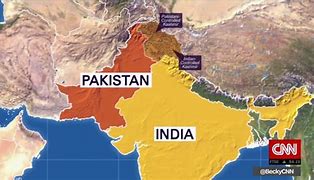While Cost Volume Profit (CVP) analysis is a helpful tool for understanding the relationships between costs, volume, and profits, it’s crucial to acknowledge that it’s not without limitations. For any business dealing with multiple products, the application of cost volume profit analysis requires a more nuanced approach. As a result, they could adjust the product mix to focus more heavily on the most profitable components to maximize overall margins and total company profits. Conversely, the analysis could show that raising prices above a certain threshold leads to reduced sales without sufficiently higher margins to maintain profitability. By modeling different scenarios, businesses can use CVP to find the ideal balance of volume and margin. A business would use a CVP analysis to figure out whether there is an economic justification for a product to be manufactured.
Continually monitor and update CVP analysis – Best Practices for Cost-Volume-Profit (CVP) Analysis
- Cost-volume-profit (CVP) analysis is an important financial modeling tool used to understand the relationships between costs, sales volume, and profit.
- Identifying and understanding these misconceptions is crucial to making accurate business decisions.
- For example, a bike factory would classify bicycle tire costs as a variable cost.
- As a result, the contribution margin and operating income amounts decrease.
- This assumption fails to consider factors such as economies of scale or diseconomies of scale, where the unit cost declines or increases based on the production level.
Cost-Volume-Profit (CVP) Analysis is a critical tool for business owners and managers to use when making operational decisions. It enables them to comprehend how variations in costs, volume, and prices affect the profitability of their products or services. As a result, it is critical in strategic planning, budgeting, and forecasting. It aids in illustrating how changes in costs, prices, and sales volume affect profitability, thereby facilitating strategic decision-making and planning. Similarly, CVP analysis presumes that both variable and fixed costs behave linearly.
What assumptions does CVP analysis make?
This analysis also identifies the sales volume required to achieve targeted profit levels. This enables informed decisions regarding resource allocation, cost management, and strategic planning for growth. Managers, owners, or accountants use cost volume profit (CVP) analysis to estimate how profits are affected by changes in sales quantity, sales price, variable costs, fixed costs, and sales mix. The overall effect of changes in sales quantity, sales price, variable costs, and fixed costs are discussed below. The effects of these changes are calculated in Video Illustration 4-3, Video Illustration 4-4, and Video Illustration 4-5.
Unlock Cost Volume Profit Analysis Formula: Understanding the PV Ratio
As such, businesses that offer different products must calculate cost volume profit definition a weighted average contribution margin to determine the breakeven point. CVP analysis provides business owners with a clear understanding of the relationship between their costs, revenues, and profits. Through this, they can uncover deeper insights into their product profitability and gain a better understanding of how changes can impact profitability. The first principle to consider when looking at cost volume profit analysis is the behavior of costs. It is assumed within this analysis that costs can be strictly categorized into fixed and variable costs.
Company
Each one plays a crucial role in the calculation and interpretation of the analysis. If the store sells $10,000 worth of merchandise in a month, the contribution margin would be zero, and it could not cover its fixed costs. The contribution margin can be used to cover the fixed costs and generate a profit. In this example, the contribution margin of $10,000 can be used to cover the fixed costs of $10,000 and generates zero profit. This means that the company needs to sell 2,000 widgets to cover its fixed costs and break even.
CVP analysis shows the volume needed at different prices to reach profit goals. It’s still difficult to see how these changes may affect your sales patterns. They may go up, they may go down, this is something that a CVP analysis cannot consider. In a world where business success relies heavily on relationships, CVP analysis may not account for the significance of network effects or partnerships. It fails to capture the complete picture of a business’s operations and opportunities.
- A cost volume profit definition, defined also as the CVP model, is a financial model that shows how changes in sales volume, prices, and costs will affect profits.
- We’re a headhunter agency that connects US businesses with elite LATAM professionals who integrate seamlessly as remote team members — aligned to US time zones, cutting overhead by 70%.
- By gathering and analyzing this information, accountants can perform CVP analysis and make informed decisions about pricing, product mix, and resource allocation.
- The store can make informed decisions about pricing, product mix, and resource allocation by understanding the fixed costs.
In this example, the total contribution margin for the company is $15,000 for 3,000 units sold. The break-even point (BEP), in units, is the number of products the company must sell to cover all production costs. Similarly, the break-even point in dollars is the amount of sales the company must generate to cover all production costs (variable and fixed costs). Across cost accounting methods, CVP delivers vital data to optimize profitability through informed decision making on pricing, costs, volume, and product mix. CVP principles can be applied across various cost accounting approaches. For job costing of custom production runs, CVP helps businesses quote appropriate pricing to cover costs and achieve target margins.
Formula
The contribution margin income statement is covered in detail in Chapter 1. In this chapter, cost volume profit analysis using the contribution margin income statement is introduced. The contribution margin ratio shows the portion of sales revenue exceeding variable expenses.
CFI is the global institution behind the financial modeling and valuation analyst FMVA® Designation. CFI is on a mission to enable anyone to be a great financial analyst and have a great career path. In order to help you advance your career, CFI has compiled many resources to assist you along the path. There are several different components that together make up CVP analysis. These components involve various calculations and ratios, which will be broken down in more detail in this guide.
This information is helpful in budgeting, forecasting, and planning for future business growth. For instance, a company might analyze the potential impact of rising raw material costs due to supply chain disruptions. By simulating cost scenarios, the business can estimate how its break-even point would shift and adjust strategies accordingly. This process aids in contingency planning and informs pricing or cost management decisions. Sensitivity analysis also evaluates external factors like regulatory changes or consumer demand shifts, ensuring adaptability in evolving environments.










